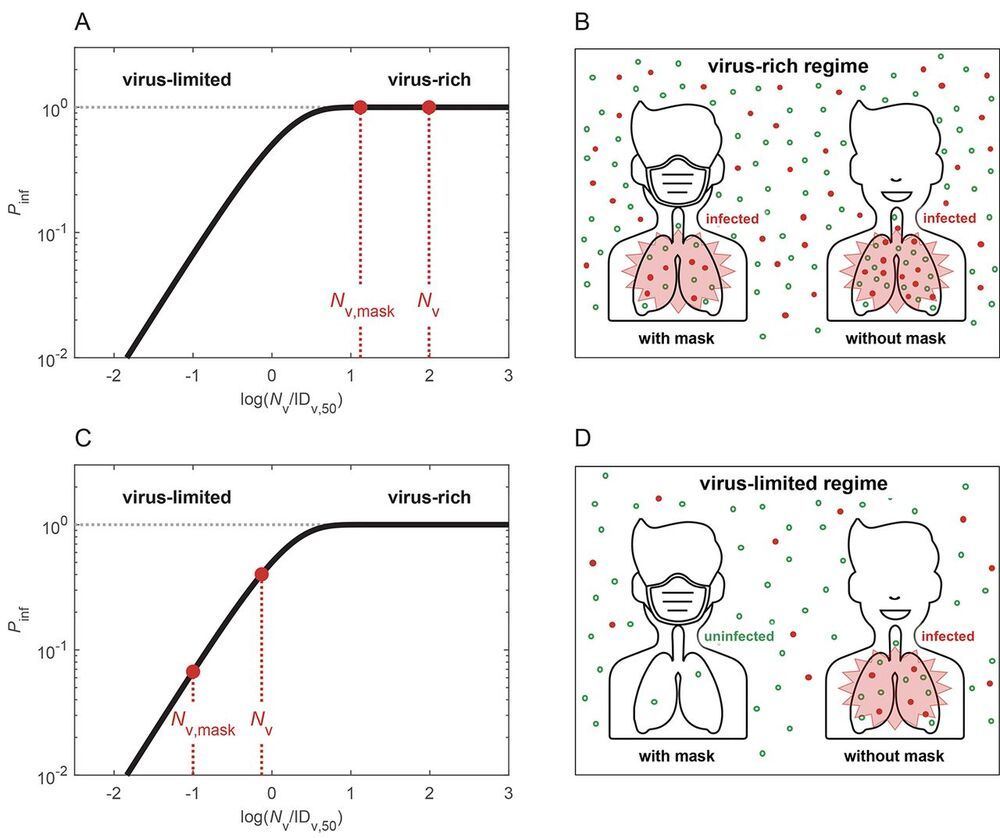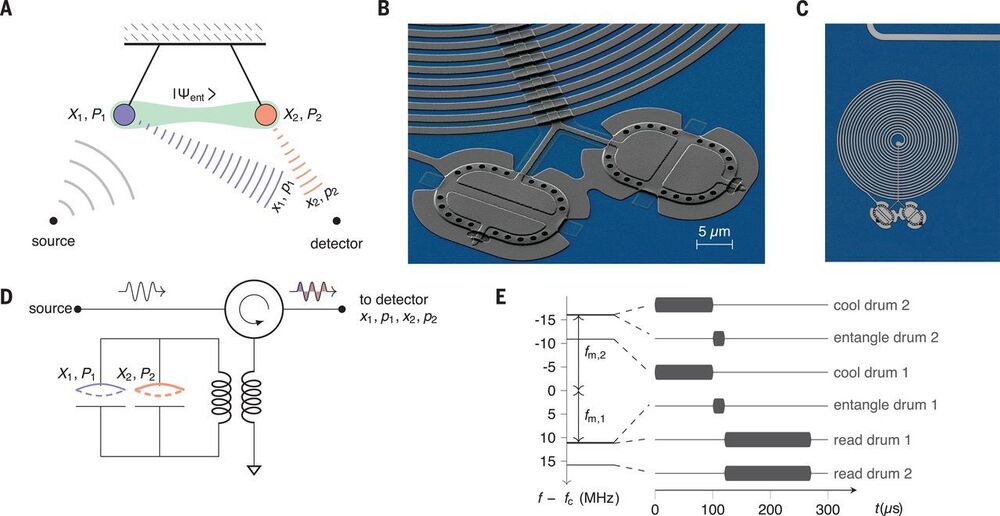The scientist on why studying elementary particles is only one way of explaining phenomena, how the 3D printer could change the world, and her optimism about women in science.


From a purely scientific frame of reference, many quantum phenomena like non-local correlations between distant entities and wave-particle duality, the wave function collapse and consistent histories, quantum entanglement and teleportation, the uncertainty principle and overall observer-dependence of reality pin down our conscious mind being intrinsic to reality. And this is the one thing the current physicalist paradigm fails to account for. Critical-mass anomalies will ultimately lead to the full paradigm shift in physics. It’s just a matter of time.
With consciousness as primary, everything remains the same and everything changes. Mathematics, physics, chemistry, biology are unchanged. What changes is our interpretation as to what they are describing. They are not describing the unfolding of an objective physical world, but transdimensional evolution of one’s conscious mind. There’s nothing “physical” about our physical reality except that we perceive it that way. By playing the “Game of Life” we evolved to survive not to see quantum mechanical reality. At our classical level of experiential reality we perceive ourselves as physical, at the quantum level we are a probabilistic wave function, which is pure information.
No matter how you slice it, reality is contextual, the notion that immediately dismisses ‘observer-independent’ interpretations of quantum mechanics and endorses the Mental Universe hypothesis. But we have to be careful here not to throw the baby out with the bathwater, so to speak. I’d like to make a very important point at this juncture of our discussion: Mental and physical are two sides of the same coin made of information. Both should be viewed as the same substance.
Keep watching to look at three of the most fantastic quantum breakthroughs that bring liberation and freedom to the world of science today! Subscribe to Futurity for more videos.
#quantum #quantumcomputing #google.
As we advance as a species, there are a lot of things that once seemed impossible a century ago that are now a reality. It’s called evolving. For example, there was a time when most people believed the earth was flat. Then Eratosthenes came onto the scene and proved that the world is round.
At the time, it was groundbreaking. But today, quantum mechanics rules the roost. This school of physics deals with the physical realm on the scale of atoms and electrons; thus making many of the equations in classical mechanics useless. With that being said, let’s take a look at three of the most amazing quantum breakthroughs that are bringing liberation and freedom to the world of science today!
We kick things off with a team of Chinese scientists claiming to have constructed a quantum computer that has the ability to perform certain computations almost 100 trillion times faster than the world’s most advanced supercomputer.
The breakthrough sheds light on quantum computational advantage—which is also famously known as quantum supremacy. But it’s become a hotly-contested tech race between Chinese researchers and some of the largest US tech corporations such as Amazon, Google, and Microsoft.

Researchers from University of Copenhagen have investigated what happened to a specific kind of plasma—the first matter ever to be present—during the first microsecond of Big Bang. Their findings provide a piece of the puzzle to the evolution of the universe, as we know it today.
About 14 billion years ago, our universe changed from being a lot hotter and denser to expanding radically—a process that scientists have named the Big Bang.
And even though we know that this fast expansion created particles, atoms, stars, galaxies and life as we know it today, the details of how it all happened are still unknown.

The modern idea that nature is discrete originated in Ancient Greek atomism. Leucippus, Democritus and Epicurus all argued that nature was composed of what they called ἄτομος (átomos) or ‘indivisible individuals’. Nature was, for them, the totality of discrete atoms in motion. There was no creator god, no immortality of the soul, and nothing static (except for the immutable internal nature of the atoms themselves). Nature was atomic matter in motion and complex composition – no more, no less.
Despite its historical influence, however, atomism was eventually all but wiped out by Platonism, Aristotelianism and the Christian tradition that followed throughout the Middle Ages. Plato told his followers to destroy Democritus’ books whenever they found them, and later the Christian tradition made good on this demand. Today, nothing but a few short letters from Epicurus remain.
Atomism was not finished, however. It reemerged in 1417, when an Italian book-hunter named Poggio Bracciolini discovered a copy of an ancient poem in a remote monastery: De Rerum Natura (On the Nature of Things), written by Lucretius (c99–55 BCE), a Roman poet heavily influenced by Epicurus. This book-length philosophical poem in epic verse puts forward the most detailed and systematic account of ancient materialism that we’ve been fortunate enough to inherit. In it, Lucretius advances a breathtakingly bold theory on foundational issues in everything from physics to ethics, aesthetics, history, meteorology and religion. Against the wishes and best efforts of the Christian church, Bracciolini managed to get it into print, and it soon circulated across Europe.

In 2018, Cornell researchers built a high-powered detector that, in combination with an algorithm-driven process called ptychography, set a world record by tripling the resolution of a state-of-the-art electron microscope.
As successful as it was, that approach had a weakness. It only worked with ultrathin samples that were a few atoms thick. Anything thicker would cause the electrons to scatter in ways that could not be disentangled.
Now a team, again led by David Muller, the Samuel B. Eckert Professor of Engineering, has bested its own record by a factor of two with an electron microscope pixel array detector (EMPAD) that incorporates even more sophisticated 3D reconstruction algorithms.

Do we need to revisit this? 🤔
Airborne transmission by droplets and aerosols is important for the spread of viruses. Face masks are a well-established preventive measure, but their effectiveness for mitigating SARS-CoV-2 transmission is still under debate. We show that variations in mask efficacy can be explained by different regimes of virus abundance and related to population-average infection probability and reproduction number. For SARS-CoV-2, the viral load of infectious individuals can vary by orders of magnitude. We find that most environments and contacts are under conditions of low virus abundance (virus-limited) where surgical masks are effective at preventing virus spread. More advanced masks and other protective equipment are required in potentially virus-rich indoor environments including medical centers and hospitals. Masks are particularly effective in combination with other preventive measures like ventilation and distancing.
Airborne transmission is one of the main pathways for the transmission of respiratory viruses, including the severe acute respiratory syndrome coronavirus 2 (SARS-CoV-2) (1). Wearing face masks has been widely advocated to mitigate transmission. Masks are thought to protect people in two ways: source control reducing the emission and spread of respiratory viruses through airborne droplets and aerosols, and wearer protection reducing the inhalation of airborne respiratory viruses.
The effectiveness of masks, however, is still under debate. Compared to N95/FFP2 respirators which have very low particle penetration rates (around ~5%), surgical and similar masks exhibit higher and more variable penetration rates (around ~30–70%) (2, 3). Given the large number of particles emitted upon respiration and especially upon sneezing or coughing , the number of respiratory particles that may penetrate masks is substantial, which is one of the main reasons leading to doubts about their efficacy in preventing infections. Moreover, randomized clinical trials show inconsistent or inconclusive results, with some studies reporting only a marginal benefit or no effect of mask use (5, 6). Thus, surgical and similar masks are often considered to be ineffective. On the other hand, observational data show that regions or facilities with a higher percentage of the population wearing masks have better control of the coronavirus disease 2019 (COVID-19) (7–9).

Scientists dramatically enhance the achievable resolution at free-electron lasers with a new technique.
Hard X-ray free-electron lasers (XFELs) have delivered intense, ultrashort X-ray pulses for over a decade. One of the most promising applications of XFELs is in biology, where researchers can capture images down to the atomic scale even before the radiation damage destroys the sample. In physics and chemistry, these X-rays can also shed light on the fastest processes occurring in nature with a shutter speed lasting only one femtosecond – equivalent to a millionth of a billionth of a second.
However, on these minuscule timescales, it is extremely difficult to synchronize the X-ray pulse that sparks a reaction in the sample on the one hand and the laser pulse which ‘observes’ it on the other. This problem is called timing jitter, and it is a major hurdle in ongoing efforts to perform time-resolved experiments at XFELs with ever-shorter resolution.

Quantum entanglement occurs when two separate entities become strongly linked in a way that cannot be explained by classical physics; it is a powerful resource in quantum communication protocols and advanced technologies that aim to exploit the enhanced capabilities of quantum systems. To date, entanglement has generally been limited to microscopic quantum units such as pairs or multiples of single ions, atoms, photons, and so on. Kotler et al. and Mercier de Lépinay et al. demonstrate the ability to extend quantum entanglement to massive macroscopic systems (see the Perspective by Lau and Clerk). Entanglement of two mechanical oscillators on such a large length and mass scale is expected to find widespread use in both applications and fundamental physics to probe the boundary between the classical and quantum worlds.
Science, this issue p. 622, p. 625; see also p. 570
Quantum entanglement of mechanical systems emerges when distinct objects move with such a high degree of correlation that they can no longer be described separately. Although quantum mechanics presumably applies to objects of all sizes, directly observing entanglement becomes challenging as masses increase, requiring measurement and control with a vanishingly small error. Here, using pulsed electromechanics, we deterministically entangle two mechanical drumheads with masses of 70 picograms. Through nearly quantum-limited measurements of the position and momentum quadratures of both drums, we perform quantum state tomography and thereby directly observe entanglement. Such entangled macroscopic systems are poised to serve in fundamental tests of quantum mechanics, enable sensing beyond the standard quantum limit, and function as long-lived nodes of future quantum networks.

Particle physics is a field of extremes. Scales always have 10really big number associated. Some results from the Large Hadron Collider Beauty (LHCb) experiment have recently been reported that are statistically significant, and they may have profound implications for the Standard Model, but it might also just be a numbers anomaly, and we won’t get to find out for a while. Let’s dive into the basics of quantum particles, in case your elementary school education is a little rusty.